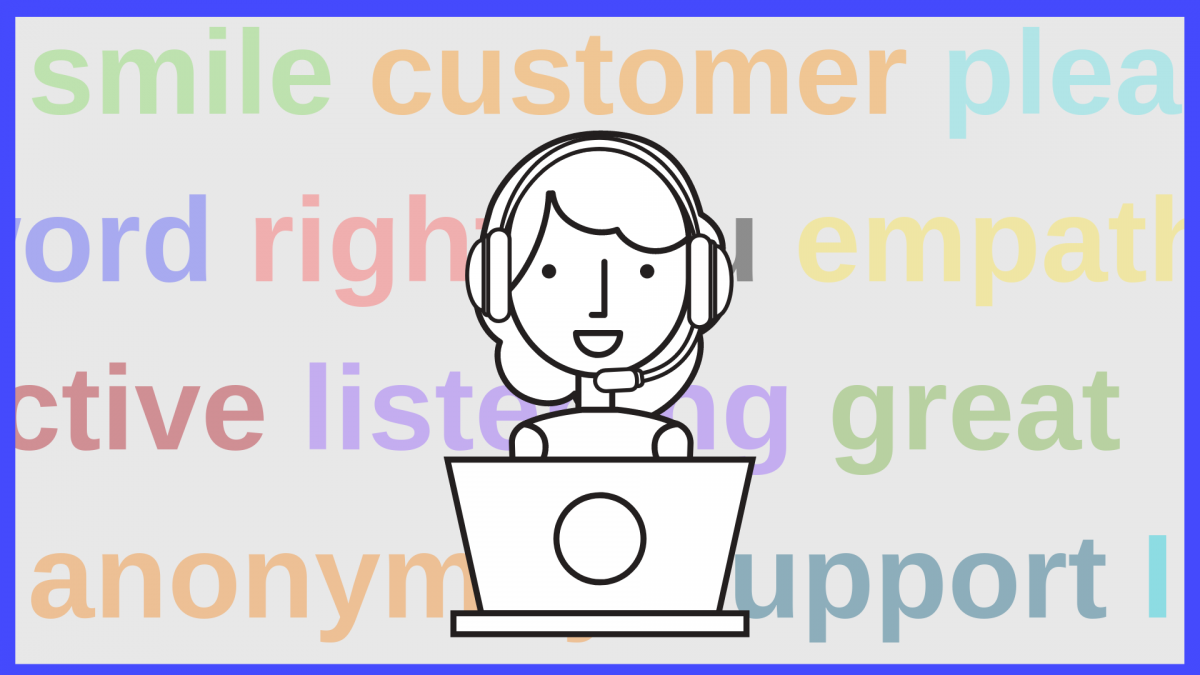Back to blog
4 MIN READ
Empathy Statements for Effective In-App User Service: 8 Best Practices
PUBLISHED
22 September, 2019

Product Analytics Expert

Customer support is becoming more and more relevant for mobile apps. Using empathy statements will help you to get a better and more personal connection to your customer.
It’s a crucial area that will determine the success of your app, especially if you start a new business. The better the customer support, the better the reviews in the app store. The bigger the user satisfaction, the bigger the chance that your app will go viral.
It is not easy to build a successful conversation with your customers, especially when they contact you with problems.
Whenever they call you, write an email or chat with you, your job is to make them feel heard, understood, respected and help them to solve their problems. Showing empathy and understanding is essential to have a satisfying conversation.
What are Empathy Statements?
Empathy is needed across all channels.
But it’s challenging to build up an empathetic conversation when customers are lost in emotions, anger and frustration.
Empathy statements are short phrases which help you to establish a connection to your customer.
They show that you take your customer seriously and care about their problems. They create trust and understanding of each other.
How Do I Form Empathy Statements?
Sure, depending on the type of conversation (e.g. phone, email or chat) you will use different empathic statements.
Not every idea is appropriate for every sort of conversation. Not every point fits your personal conversation style. Find out what fits you and the current sort of conversation best and especially what fits your company’s tone of voice.
8 Empathy statements for in-app user service
The following list shows a lot of different empathy statements and basic rules.
Personal Pronouns Instead of Anonymity
Personal pronouns, especially “I” (rather than the more corporate form “we”) give the customer the feeling that you personally care about their problem. He will feel understood.
Start the conversation personally and positively. When you have a conversation via telephone: smile! It helps to have a positive voice. The customer will hear the smile.
When you write via email or chat: Introduce yourself. It shows that a real person and not a computer answers.
“Welcome to [INSERT COMPANY NAME] Customer Service. My name is [INSERT NAME]. How can I help you today?”
Active instead of Passive Voice
When you formulate your sentences with active verbs, it doesn’t sound anonymous anymore. It gives the customer the feeling that there is a “real person” working, writing or speaking.
Compare the following statements:
“The technical support will solve the problem”
“I’ll ask the technical support to care about your problem”
Authenticity
65% of the customers prefer to speak in a casual tome.
I know that you have to follow the company’s guidelines for customer interactions. Probably you already have a list with emapthy statements to use in difficult sutiations. But besides this you should be yourself when you interacting with customers.
Standard phrases can frustrate the user and give him the feeling that you don’t really care. A more natural language makes you seem more authentic.
Use short sentences
Use Contractions: “Thanks” instead of “Thank you”, “Hi” instead of “Hello”
Be natural: “I’d love to help you with your problem” or “Give me just a minute to see what the problem is”
Scatter Positive Words
Not just the tone but also the kind of language you use has a huge impact on the customers emotions.
Include positive words like “fantastic”, “definitely”, “quickly” or “great” – these are just a few examples.
“That is a fantastic alternative…”
“I’ll definitely make sure that we solve your problem as fast as possible”
“I’ll quickly run through the process with you…”
“I have great news for you…”
Put Yourself in the Customer’s Shoes
It is important that you take the customer’s problems personally – and that you show him this.
Tiny little empathy statements which show that you understand what the user feels helps to relax him and let him feel understood and valued.
Even if you can’t directly find a solution for his problem, he’ll feel understood or even satisfied.
“I know how you feel.”
“That would frustrate me too.”
“You are totally right.”
“If I were in your position I would ask the same questions.”
Active Listening and Paraphrasing
Don’t make assumptions about what the customer is saying! Do not overwhelm him with learned empathety statements if you do not understand what he actually wants.
Let the customer explain their problem and answer with a short summary of what they said.
This has two advantages: First, it slows down the conversation (in a good way!). The customer doesn’t feel like you’re just working him off fast. Second, half of the problems will be solved after they have heard it with other words.
It is important to give the customer the opportunity to correct you or to clarify what is currently unclear. They’ll feel encouraged in the process.
“I want to make sure that I understand your problem correctly…”
“Do I understand you correctly…”
“What you’re saying is that…”
“Am I right with…”
“If I was wrong with something or I forgot something, I would appreciate it if you would correct me…”
Ask Questions
It is also a kind of active listening. If you haven’t understood the exact problem of the customer check back to see if you are right.
“Could you please describe to me what exactly don’t work?”
“Did you get an error message?”
Questions also allow you to invite the customer into a conversation. Customers do not always want to get a list of possible solutions or options. They want to feel valued and be a part of the process.
You have to find a balance between guiding the users through the prescribed problem solving process and treating every customer individually. By asking them questions not just about their issues but also about their wishes, you show that you are not just a “service robot” but also treat every customer individually.
“How can we compensate you for the caused trouble?”
“Do you need to talk to the department x too?”
“We need some time to solve the issue completely. How can we still satisfy you during this time?”
“Is there anything else that I can help you with today?”
Ask for Feedback
The only one who really can tell if your kind of communication is appropriate or not is the customer itself. Customer feedback can be very valuable.
“May I ask you some questions about today’s consultation?”
“Would you be willing to participate in a 2-3 minute feedback survey?”
“We want to make our service for you even better and value customers who are willing to give us any kind of feedback.”
Conclusion
Empathy statements can contribute to customer satisfaction, which in turn will improve the performance of your business.
Are there any approaches that we missed? Feel free to let us know in the comments.
Related content:
AUTHOR

Annemarie Bufe
Product Analytics Expert
Passionate hobby dancer. Working at UXCam.
What’s UXCam?
Related articles
Product best practices
User-Centered Design - Definition, Benefits & Methods
So you want to put your users first, but where do you start? There's a framework for it. Learn the basics of User Centered...

Marilyn Wilkinson
Soft Skills
Empathy Statements for Effective In-App User Service: 8 Best Practices
The language that you use has a huge impact on your users' emotions and thoughts. Read here which Empathy Statements help...

Annemarie Bufe
Product Analytics Expert
Soft Skills
How to get respect from your development team (as a Product Manager)
A guide for Product...

Jonas Kurzweg
Product Analytics Expert

